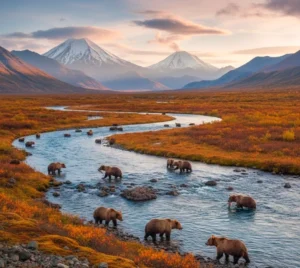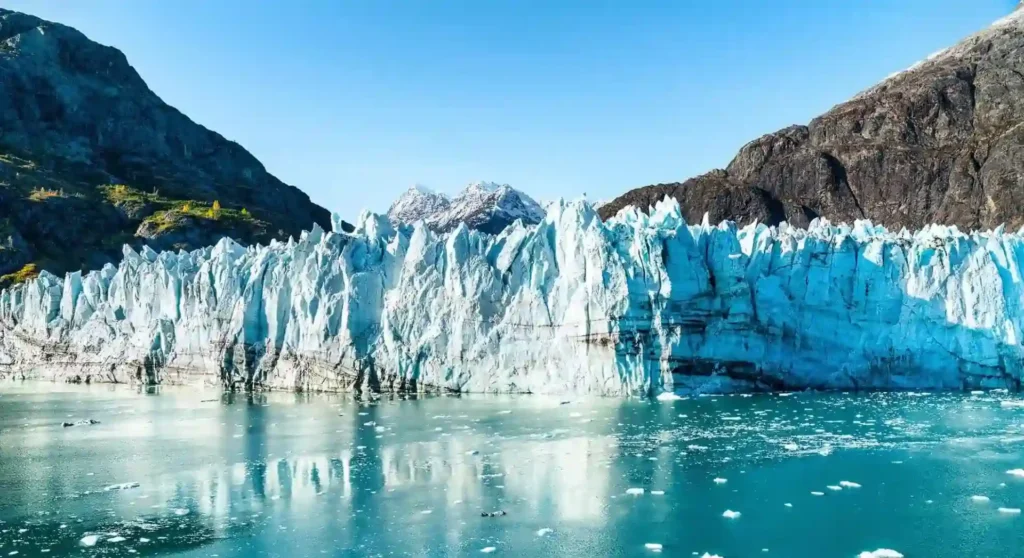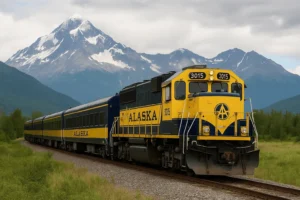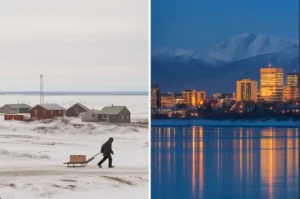Imagine this: giant glaciers slowly moving, huge chunks of ice crashing into the ocean, and whales swimming in the icy waters. This is Glacier Bay Park, one of the best park in Alaska—a place full of natural wonders and amazing wildlife.
Whether you’re planning an Alaska cruise to Glacier Bay National Park, wondering where it is located, or looking for fun things to do, this guide has you covered. From beautiful glacier views to exciting wildlife sightings, let’s explore everything that makes this park special!
Where Is Glacier Bay National Park Located in Alaska?
This National Park is situated in southeastern Alaska, welcome 700,000 visitors annually. It is part of the Inside Passage and is only accessible by boat or plane. The closest city is Gustavus, which serves as the gateway to the park. A very good option to experiance the glaciers of alaska. Many visitors reach the park via Anchorage, Alaska, to Glacier Bay National Park flights or by taking a cruise.
Glacier Bay National Park Scenic Cruising Alaska
One of the most popular ways to experience Glacier Bay National Park and Preserve, Alaska, is through scenic cruising. Many major cruise lines include this destination in their itineraries, allowing passengers to witness awe-inspiring glaciers from the comfort of their ship. The highlight of this park is watching tidewater glaciers calve, where massive chunks of ice break off and crash into the sea.
Glacier Alaska National Park Weather
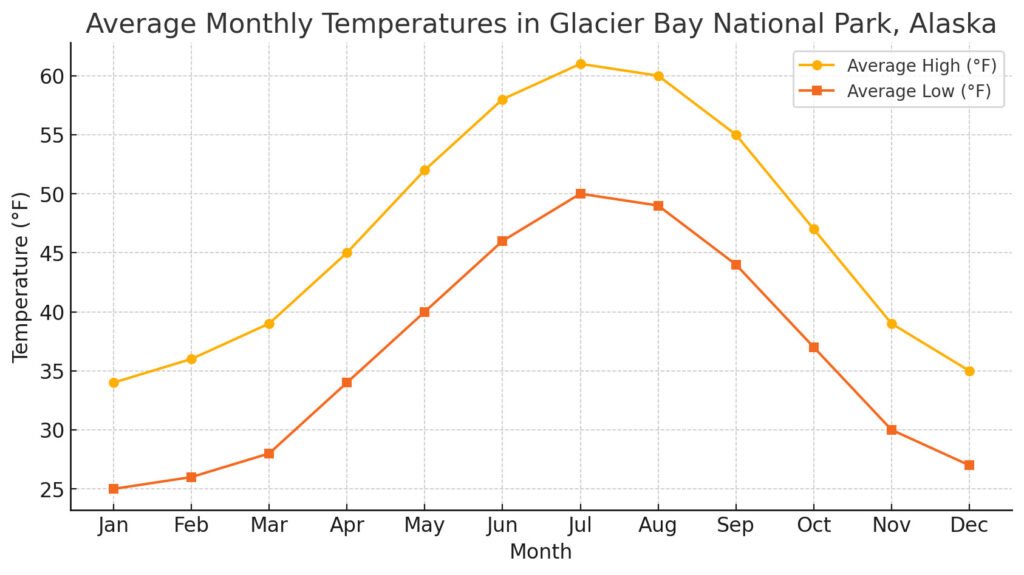
Glacier Alaska National Park Animals
This park is home to a rich variety of land, marine, and bird species. The park’s diverse ecosystems, including glaciers, forests, and coastal waters, provide a habitat for many incredible animals.
- Brown bears (Grizzly bears)
- Black bears
- Moose
- Mountain goats
- Wolves
- Coyotes
- Red foxes
- Porcupines
- Mink
- River otters
- Snowshoe hares
- Hoary marmots
- Humpback whales
- Orcas (killer whales)
- Harbor seals
- Sea otters
- Steller sea lions
- Dall’s porpoises
- Pacific white-sided dolphins
- Bald eagles
- Puffins (horned and tufted)
- Arctic terns
- Black-legged kittiwakes
- Common murres
- Ravens
- Ospreys
- Snow geese
- Golden eagles
- Gulls (glaucous-winged, herring, and mew gulls)
- Harlequin ducks
- Loons (common and yellow-billed)
- Salmon (sockeye, coho, pink, chum, and king salmon)
- Halibut
- Rockfish
- Pacific cod
- Herring
- Eulachon (candlefish)
- Jellyfish
- Sea cucumbers
- Crabs (Dungeness, king, and tanner crabs)
This national park is a protected habitat for these species, making it a great place for wildlife watching and photography. The best time to see animals is from May to September, when many species are active.
Glacier Alaska National Park Facts
- Size: The park covers 3.3 million acres, making it one of the largest protected areas in the world.
- Glaciers: The park contains over 1,000 glaciers, with tidewater glaciers like Margerie Glacier being a top attraction.
- Establishment: The Park was designated as a national monument in 1925 and became a national park in 1980.
- UNESCO Status: It is part of a World Heritage Site, recognized for its pristine environment and scientific importance.
History of Glacier Bay Park, Alaska
The area that is now covering this national park, was once covered by a massive glacier over 4,000 feet thick. In the 1700s, Captain George Vancouver and naturalist John Muir played significant roles in documenting the region’s landscape and advocating for its preservation. Today, the park is a protected area, preserving both its ecological and cultural heritage.
Glacier Alaska National Park Things to Do
There are many exciting activities to enjoy in Glaciers National Park, Alaska:
📅 Best Time to Visit: May to September
📍 Getting There: By cruise, boat, or flight to Gustavus
🎟️ Entry Fee: Free!
1. Scenic Cruising – Witness the Glaciers Up Close 🚢❄️
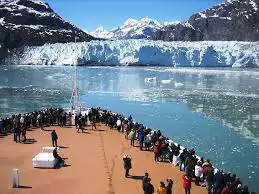
One of the most popular ways to experience this park is by cruise ship. Large ships sail through the park, giving visitors amazing views of tidewater glaciers, snow-capped mountains, and icy waters.
🔹 Best Glaciers to See: Margerie Glacier, Johns Hopkins Glacier, and Grand Pacific Glacier.
🔹 Tip: Bring binoculars to spot whales, sea lions, and bald eagles along the way!
2. Kayaking – Paddle Through Ice-Cold Waters 🛶❄️
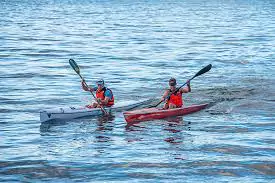
For a more adventurous experience, try kayaking through Glacier Bay’s waters. You can paddle near massive glaciers, see wildlife up close, and enjoy the peaceful surroundings.
🔹 Best Kayaking Spots: Bartlett Cove (great for beginners) and John Hopkins Inlet (for experienced paddlers).
🔹 Tip: Rent a kayak in Gustavus or join a guided kayak tour for safety.
3. Wildlife Watching – Spot Whales, Bears & More 🐋🐻🦅
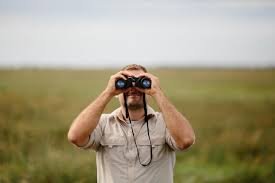
Glacier Bay is home to a variety of wildlife, both on land and in the sea. Look out for:
✅ Humpback whales & orcas in the water
✅ Brown bears & black bears along the shoreline
✅ Sea otters, seals & sea lions resting on icebergs
✅ Bald eagles & puffins soaring above
🔹 Best Time for Wildlife Viewing: May to September, during the warmer months.
🔹 Tip: Bring a good camera and spotting scope for the best wildlife photography.
4. Hiking – Explore the Rainforests & Mountains 🌲🥾
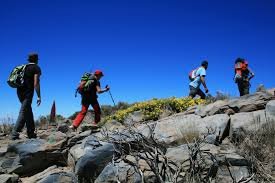
While much of the park is covered in ice and water, there are still great hiking trails in Bartlett Cove and surrounding areas.
🚶♂️ Best Hiking Trails in Glacier Bay Park:
- Forest Loop Trail (1-mile loop): Easy walk through lush rainforest 🌿
- Bartlett River Trail (4 miles round trip): Moderate hike along a river with chances to see moose 🦌
- Bartlett Lake Trail (8 miles round trip): Challenging hike to a beautiful glacier-fed lake ❄️
🔹 Tip: Carry bear spray and make noise while hiking to avoid surprising wildlife.
5. Camping – Sleep Under the Northern Skies ⛺🌌
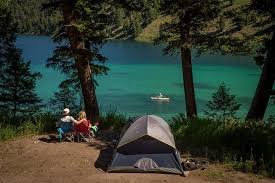
For those who love the outdoors, camping in this national park of Alaska is an unforgettable experience. The only designated campground is at Bartlett Cove, near the visitor center.
🔹 What You Need to Know:
✅ Free camping, but you need a permit from the visitor center.
✅ No services—bring all your supplies.
✅ Be bear-aware and store food properly.
🔹 Tip: The summer months offer long daylight hours, making it perfect for late-night campfires and stargazing.
6. Join a Ranger-Led Program – Learn from the Experts 👨🏫🏔️
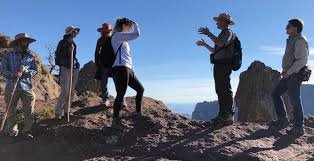
Park rangers offer free guided programs at the visitor center, including:
✅ Guided walks in the forest 🌲
✅ Evening talks about glaciers & wildlife ❄️
✅ Cultural programs about Alaska’s Indigenous history 🏕️
🔹 Tip: Check the schedule at the Glacier Bay Visitor Center for daily programs.
7. Fishing – Try Your Luck in Alaska’s Waters 🎣🐟
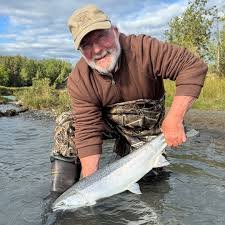
If you love fishing, Glacier Bay offers excellent fishing spots for catching salmon and halibut.
🔹 Best Fishing Spots:
- Bartlett Cove (shore fishing)
- Glacier Bay waters (for deep-sea fishing)
🔹 Tip: Get an Alaska fishing license before you start fishing.
8. Photography – Capture Stunning Landscapes 📸🌄

From massive glaciers to rare wildlife,this is a dream location for photographers.
🔹 Best Photo Spots:
✅ Margerie Glacier – Iconic glacier views ❄️
✅ Mount Fairweather – Towering 15,325-foot peak 🏔️
✅ Whale watching areas – For action shots 🐋
🔹 Tip: Bring a zoom lens for wildlife shots and a tripod for glacier photography.
FAQs
1. Where is Glacier Bay Park located in Alaska?
This is in southeastern Alaska, near the town of Gustavus. It is part of the Inside Passage and can only be reached by boat or plane.
2. How do you get to this park?
The park is accessible by air or sea. Most visitors arrive by cruise ship, but you can also take a flight from Juneau to Gustavus, followed by a short boat ride.
3. What is the best time to visit Glacier Bay Park?
The best time to visit is May to September, when the weather is mild (45°F–65°F), and you can enjoy wildlife viewing, hiking, and scenic cruising.
4. What is special about Glacier Bay National Park?
Glacier Bay is famous for its massive glaciers, stunning fjords, and diverse wildlife, including whales, sea otters, and bears. It is also a UNESCO World Heritage Site.
5. Can you drive to Glacier Bay National Park?
No, there are no roads connecting this park to the rest of Alaska. You must fly or take a boat to reach the park.
6. Do cruise ships stop at Glacier Bay National Park?
Most cruise ships do not stop at the park, but they cruise through Glacier Bay, offering stunning views of glaciers and wildlife.
7. How big is Glacier Bay National Park?
The park covers 3.3 million acres, making it one of the largest protected areas in the world.
8. What wildlife can you see in Glacier Bay National Park?
You can spot humpback whales, orcas, sea lions, sea otters, brown bears, black bears, moose, and bald eagles.



